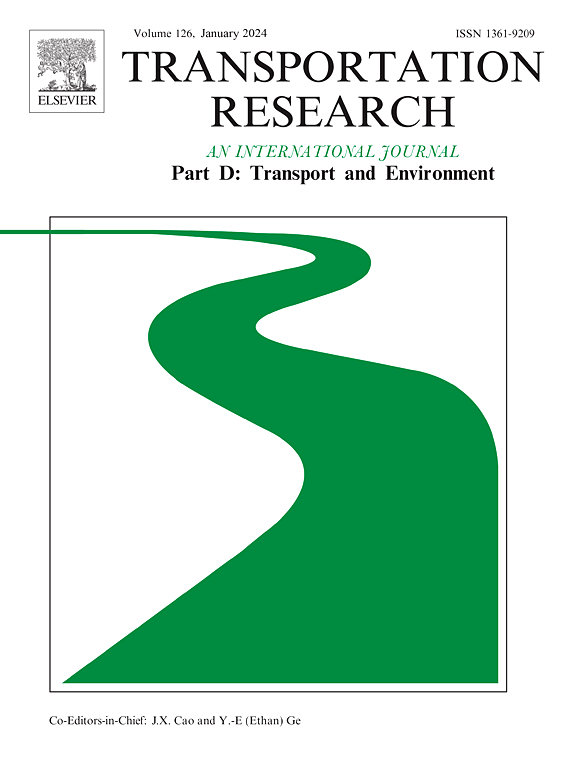智能光伏微电网调度共享自主网约车的潜力
IF 7.3
1区 工程技术
Q1 ENVIRONMENTAL STUDIES
Transportation Research Part D-transport and Environment
Pub Date : 2025-05-23
DOI:10.1016/j.trd.2025.104822
引用次数: 0
摘要
可再生能源的整合,特别是太阳能,导致了“鸭子曲线”,其特点是中午过剩,晚上需求高峰。电动汽车(ev)的兴起进一步加剧了这一问题。然而,很少有研究针对绿色能源对电动网约车的充电和调度策略进行优化。本研究选取共享自动驾驶汽车(saev)的典型研究场景,提出了动态充电与网约车调度相结合的框架,重点研究了在不同区域需求和天气条件下,saev对电网、光伏发电公司和网约车平台的影响。结果表明,该方案可分别提高光伏利用率32.8%和平台总效益6.62%,晴天可实现8.82%的调峰补谷效益。这些发现强调了协调电动汽车调度对电网稳定的潜力,并为碳中和战略提供了有价值的见解。本文章由计算机程序翻译,如有差异,请以英文原文为准。
Potential of scheduling shared autonomous ride-hailing in intelligent photovoltaic microgrids
The integration of renewable energy, particularly solar power, has resulted in the “duck curve,” characterized by midday surpluses and evening demand peaks. The rise of electric vehicles (EVs) has further exacerbated this issue. However, few studies have optimized the charging and scheduling strategies of electric ride-hailing services in coordination with green energy. This study selects a typical research scenario of SAEVs (Shared Autonomous Electric Vehicles) and proposes a framework that incorporates dynamic charging and ride-hailing dispatching, with a focus on the impact of SAEVs on the power grid, photovoltaic power companies, and ride-hailing platforms under varying regional demands and weather conditions. The results demonstrate that photovoltaic utilization and total platform benefits can be increased by 32.8% and 6.62%, while achieving a peak-shaving and valley-filling benefit of 8.82% on sunny days. These findings underscore the potential of coordinated EV dispatching for grid stability and provide valuable insights for carbon neutrality strategies.
求助全文
通过发布文献求助,成功后即可免费获取论文全文。
去求助
来源期刊
CiteScore
14.40
自引率
9.20%
发文量
314
审稿时长
39 days
期刊介绍:
Transportation Research Part D: Transport and Environment focuses on original research exploring the environmental impacts of transportation, policy responses to these impacts, and their implications for transportation system design, planning, and management. The journal comprehensively covers the interaction between transportation and the environment, ranging from local effects on specific geographical areas to global implications such as natural resource depletion and atmospheric pollution.
We welcome research papers across all transportation modes, including maritime, air, and land transportation, assessing their environmental impacts broadly. Papers addressing both mobile aspects and transportation infrastructure are considered. The journal prioritizes empirical findings and policy responses of regulatory, planning, technical, or fiscal nature. Articles are policy-driven, accessible, and applicable to readers from diverse disciplines, emphasizing relevance and practicality. We encourage interdisciplinary submissions and welcome contributions from economically developing and advanced countries alike, reflecting our international orientation.

 求助内容:
求助内容: 应助结果提醒方式:
应助结果提醒方式:


